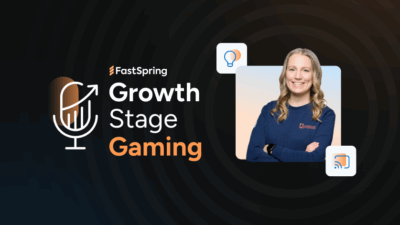Every software company out there is looking for ways to maximize its profits. Sometimes it’s a matter of cutting back costs and running a leaner, more efficient machine. Other times you want to get more buyers and increase your customer base. But sometimes maximizing profits is all about getting the most out of your existing sales.
In which case, you essentially have two options: (1) you can get your customers to spend more on each order (increase the Average Order Value), or (2) increase the frequency at which your customers buy from you (increase Customer Lifetime Value).
So, let’s talk about how you can use Average Order Value (AOV) and Customer Lifetime Value (CLTV) to increase profits.
What is AOV?
Average Order Value (AOV) is the average total of every order placed with a merchant over a defined period of time. It tracks the average dollar amount spent each time a customer places an order on a website or mobile app.
This metric is a key performance indicator (KPI) that your business should measure to get a better picture of your customers’ purchasing habits. Like other key metrics, you can track this for any time period… although most companies monitor the moving monthly average.
Why should you care about AOV?
Reaching a higher AOV means you’re bringing in more money with each transaction, which increases revenue and efficiency. It also means you need to acquire fewer customers to make the same amount of money, which leads to lower acquisition costs overall.
Another benefit to higher AOV is that the added revenue gives you more financial freedom to acquire more customers. So, the cycle continues — more customers spend more money in your store, giving you more cash in your advertising budget to get more customers.
How do you calculate AOV?
The formula to calculate the average order value is pretty simple:
Revenue / # of Orders = Average Order Value
Just remember that AOV is calculated by sales per order, not sales per customer. While a customer may buy from your shop multiple times, each of those orders are counted separately.
How do you increase AOV?
Some of the most effective tactics to increase AOV occur during the checkout process. Here are some of our favorite best practices:
1. Cross-sell
One of the easiest ways to increase order value is to add the line, “frequently bought together … ,” on your product pages, shopping cart pages, and post-purchase emails. Predictive Intent found that cross-sells on the checkout page can actually increase conversions by 3%. So, not only do cross-sells help increase order values, it boosts conversion rates as well.
2. Popular products
On your cart page, show the most popular products in your store. Sometimes showing customers what other people are buying is just the encouragement they need to click “add to cart.”
3. Upsell
If you offer multiple-tiered packages or several products at varying quantities or quality levels, an upsell approach is a great option. It’s a simple way to show customers you have a better—and more expensive—option that will better suit their needs.
4. Bundle
If you offer two or three complementary products, bundle them together at a discounted price. The beauty with this approach is that customers actually feel like they’re saving money by spending more, which is a win for everyone.
5. Loyalty programs
The beauty of loyalty programs is that customers are likely to spend more on their return visit to your shop. It also means customers are actually returning to your shop, which increases your customer lifetime value (CLTV).
Speaking of CLTV …
What is CLTV?
Customer Lifetime Value (CLTV) refers to the profit or revenue generated from one customer throughout their commitment to the company.
Why should you care about CLTV?
CLTV helps determine your Cost to Acquire a Customer (CAC). The rule of thumb is that you shouldn’t be spending more than 1/3 of your CLTV to acquire new customers.
Since it’s so expensive to acquire new customers, it’s really important that you encourage customers to return to your store. Repeat customers create the highest value and require the least amount of money and effort.
How do you calculate CLTV?
In order to get a reliable number for your CLTV, it’s super important to be strict about accuracy, and take into account the true cost of goods, actual shipping costs, transaction fees, discount codes, and refunds for each order. And be sure not to include ad spend in your calculations.
There are a few steps to get to calculate your actual CLTV …
Step 1:
Gross Profit for CLTV =
Revenue – (Cost of Goods + Shipping +Transaction Fees +Discount Codes + Refunds)
Step 2:
Customer Value = Gross Profit (from above) x Annual Purchase Frequency
Step 3:
CLTV = Customer Value (from above) x Average Customer Lifespan
How do you increase CLTV?
Besides providing amazing products or services that customers can’t get enough of, here are some tried-and-true tactics to increase customer lifetime value:
1. Brand loyalty
Create a business that inspires brand loyalty. I know that’s easier said than done, but when you create a brand or product that’s unique or better than the competition, people will be more likely to return to your store. And sometimes it’s just a matter of creating relatable and conversional content on your website and social media that helps customers connect with you.
2. Customer service
Your customer service experience can make or break your customer relationships. In fact, 51% of customers will never do business again with a company that provides bad customer service. Invest in great customer service agents, chat tools, and phone services to ensure you have the best customer service experience possible.
3. Loyalty Discounts
Provide discount codes to your confirmation emails to encourage customers to return to your store. The idea behind the discount codes should be “the more they buy, the more they’ll save.”
4. Subscriptions
This is probably the most obvious way to get repeat customers, because repetition is built into the product. Try offering subscription-based products or services to see how your customers respond to recurring purchases.
5. Simply the Purchase Process
The easier the conversion process, the more likely customers are to shop with you again. Make sure your checkout process is dialed in — it can’t be too long or too complex — and that your website and product pages are easy to navigate.
When implementing these strategies, just remember to keep the customer in mind. Make sure you create a seamless customer journey that will make them want to come back and that you’re providing them with the information they need to make the best purchase decision for their needs. If you do that, the rest of your strategy will fall into place and you’ll start to see profits increase.









